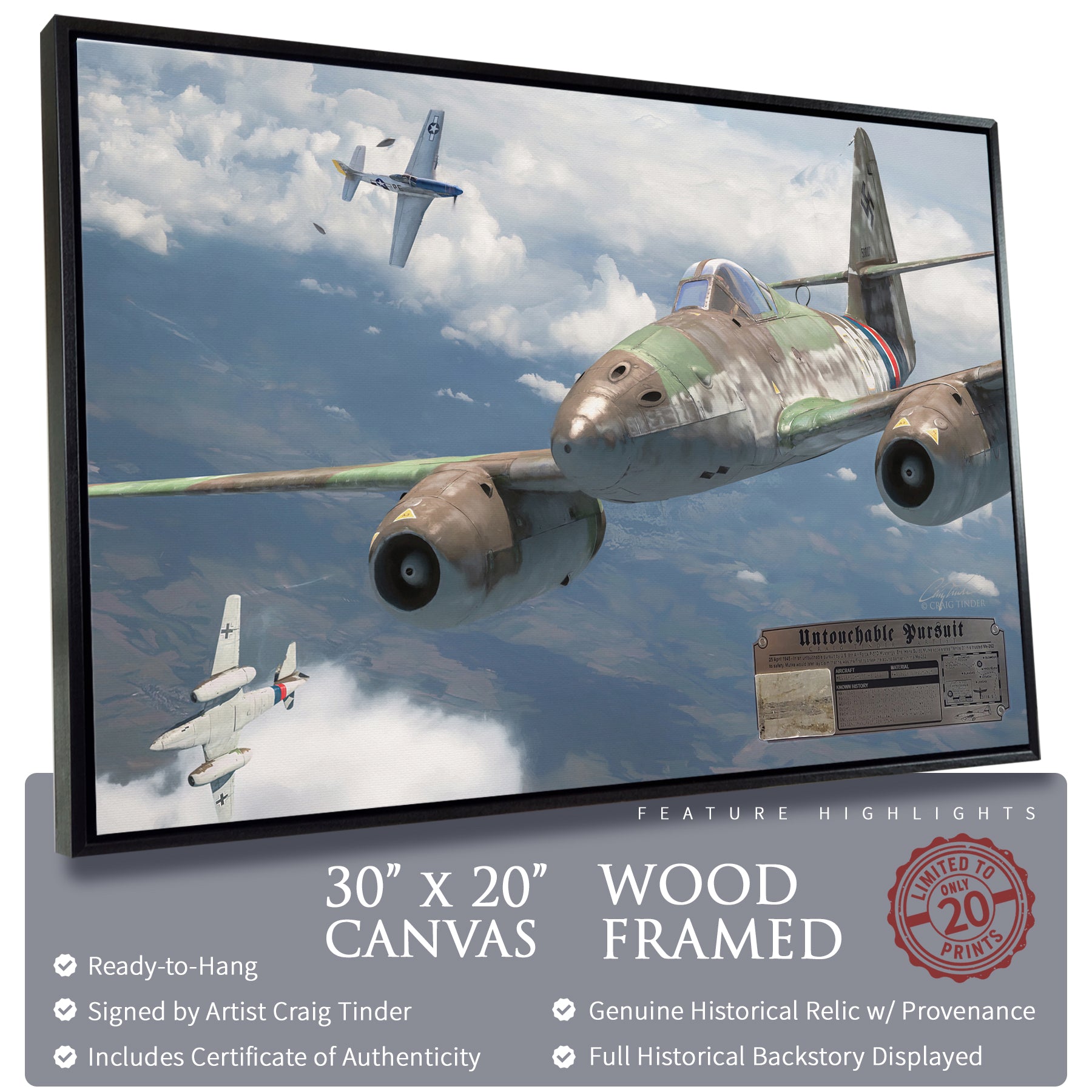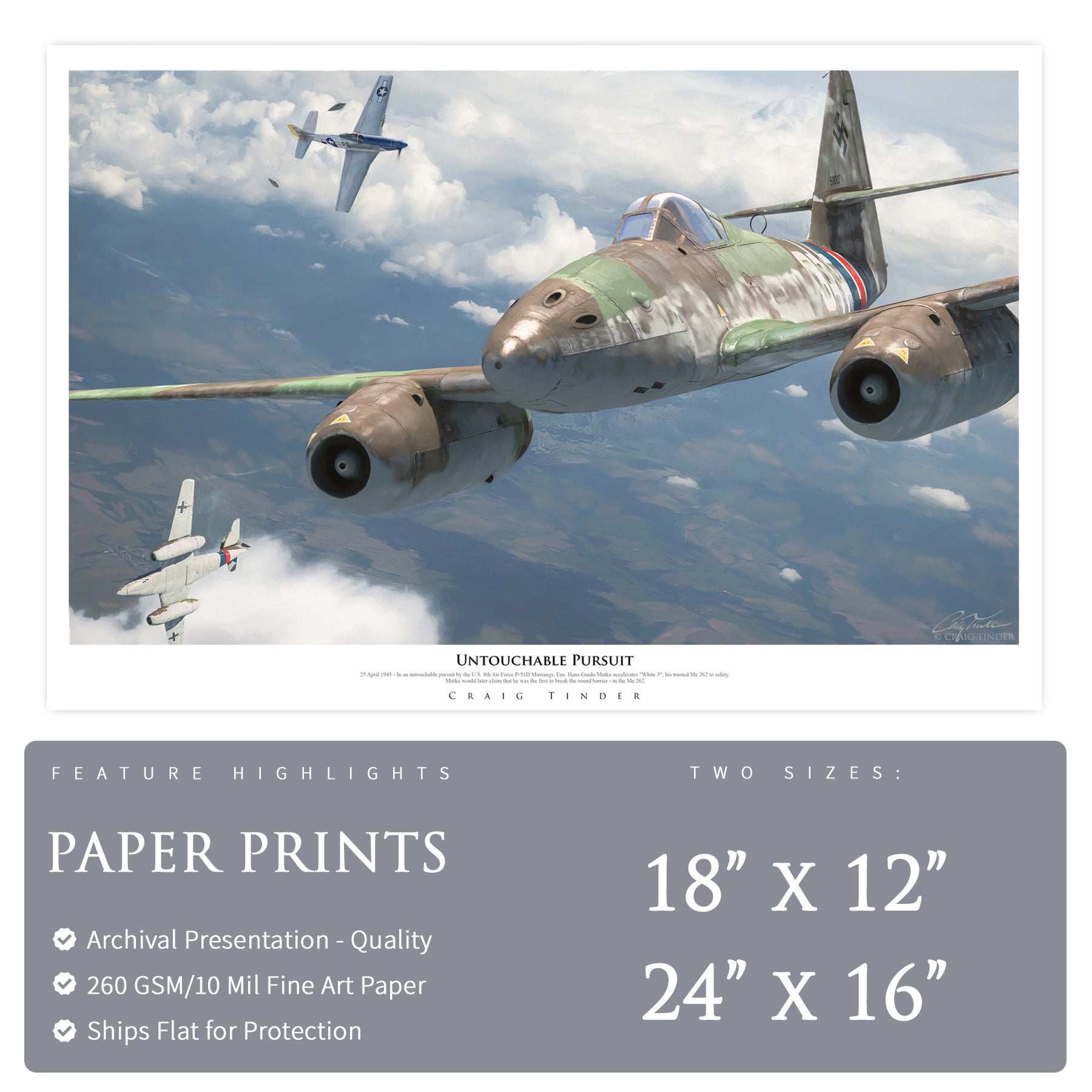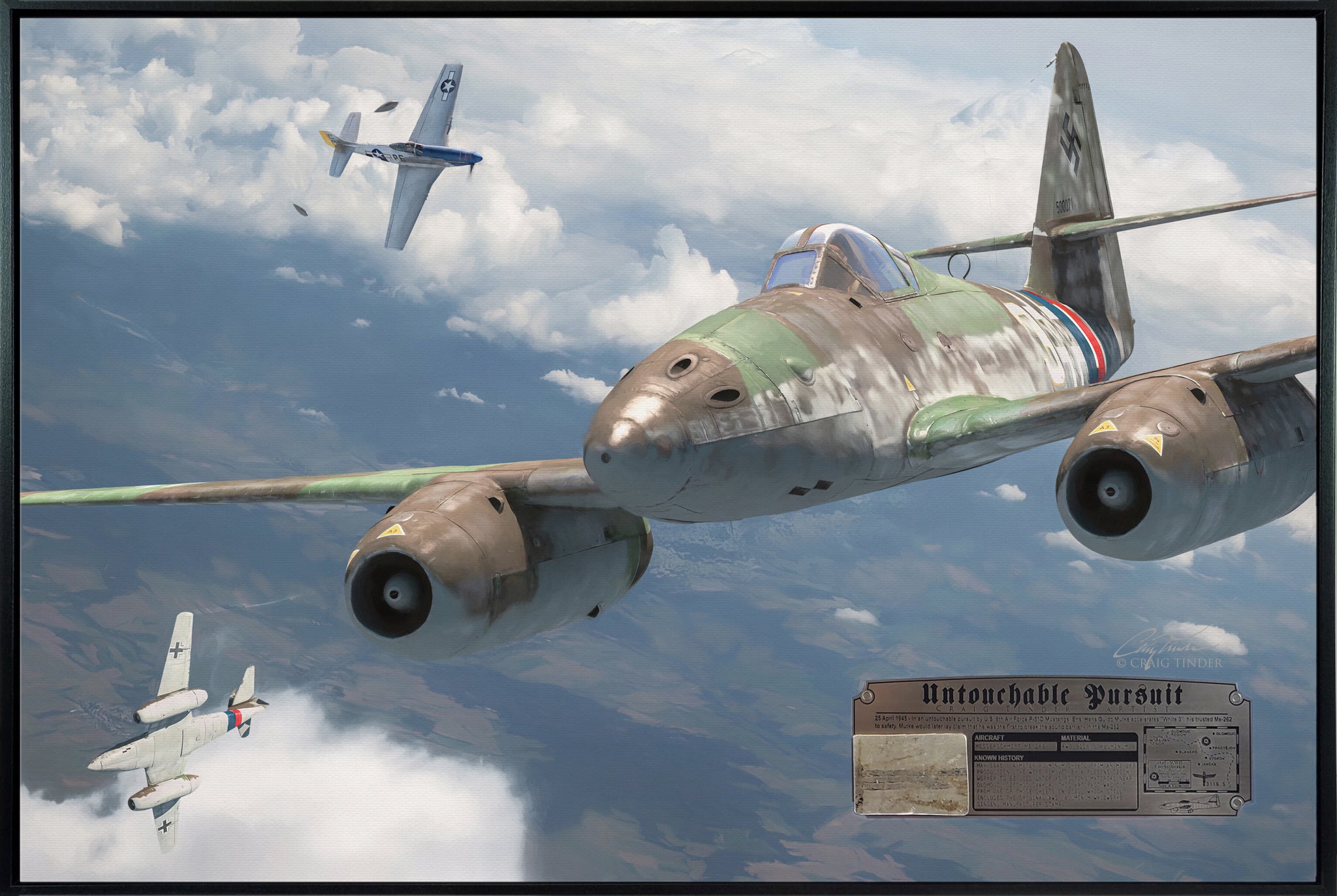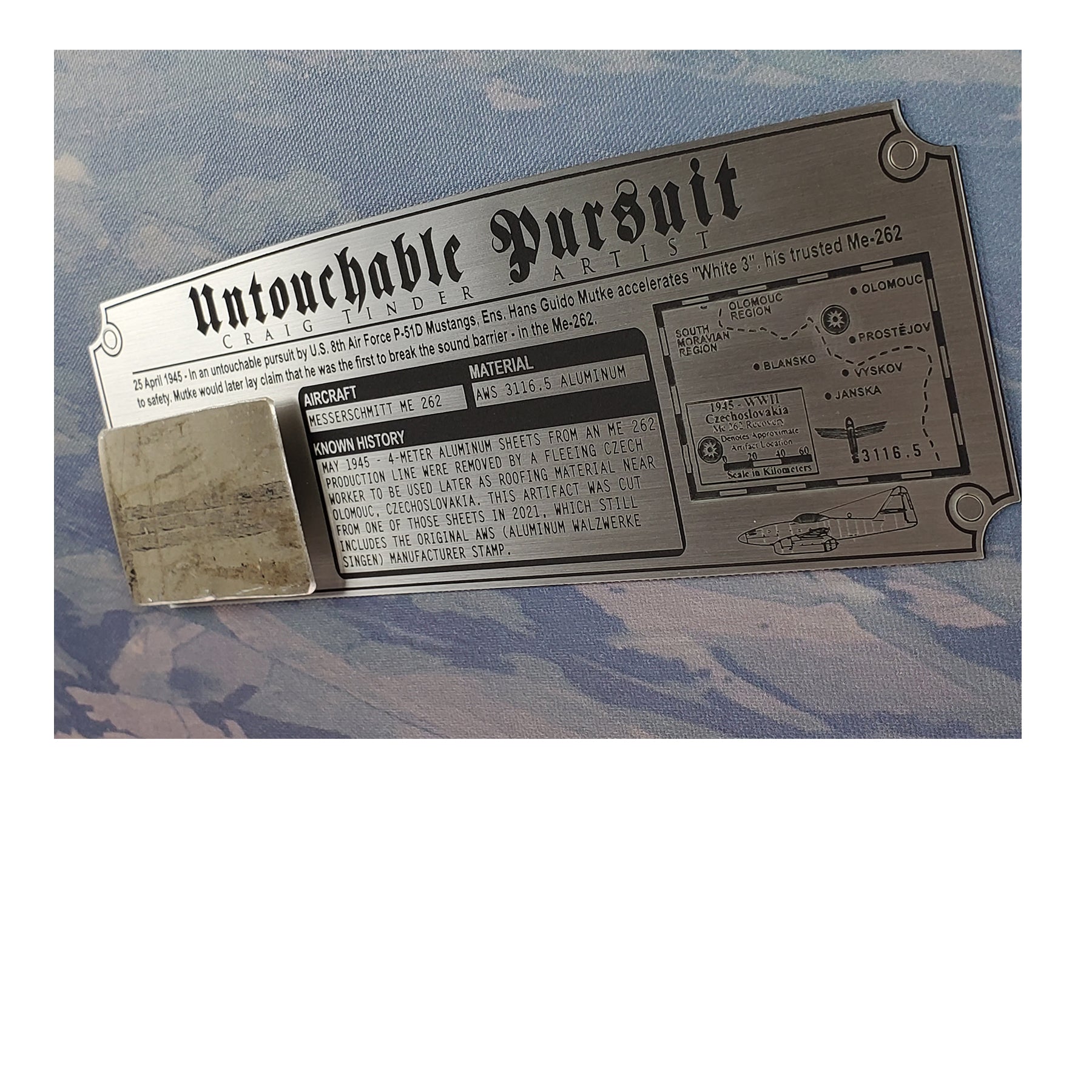







Me 262 Swallow - Untouchable Pursuit Canvas | INCLUDES: Wing Skin Relic

Me 262 Swallow - Untouchable Pursuit Canvas | INCLUDES: Wing Skin Relic
If you have any questions, you are always welcome to contact us. We'll get back to you as soon as possible, within 24 hours on weekdays.
Shipping Information
Use this text to answer questions in as much detail as possible for your customers.
Customer Support
Use this text to answer questions in as much detail as possible for your customers.
FAQ’s
Use this text to answer questions in as much detail as possible for your customers.
Contact Us
Use this text to answer questions in as much detail as possible for your customers.
Description
About the Relic & Process
May 1945 - Aluminum wing skins and sheets from an Me 262 production line were removed by a fleeing Czech worker when German production ceased at the end of the war. Using a cart and horse, the sheeting was taken to the worker's property and was used as roofing material. Aces In Action was able to acquire most of the roofing material in 2021 which had been used as wing skins on the latest production aircraft. Fortunately, the sheets had been installed with the stamping side down, thus saving the precious markings from the elements.
Each relic included with the canvas print was removed from one of those sheets in 2021, which still clearly includes the original AWS (Aluminum Walzwerke Singen) Eagle 3116.5 manufacturer stamp.  Me 262 Relic used in "Untouchable Pursuit" Print
Me 262 Relic used in "Untouchable Pursuit" Print
 Me 262 AWS 3116.5 Aluminum
Me 262 AWS 3116.5 Aluminum
 Visible Eagle AWS markings inside wing skins
Visible Eagle AWS markings inside wing skins
 Me 262 Relic as used in "Untouchable Pursuit" Print
Me 262 Relic as used in "Untouchable Pursuit" Print
Disclaimer
By purchasing from Aces In Action, you acknowledge that the product may vary slightly from the images on our website. We use authentic materials from military vehicles and relics, which may contain potentially hazardous substances. These items are not intended for ingestion, inhalation, or use by children. Aces In Action is an independent company, unaffiliated with or endorsed by any other organization. All names, logos, and trademarks are the property of their respective owners and are used for identification only, in accordance with the Lanham Act. Their use does not imply any official endorsement.
